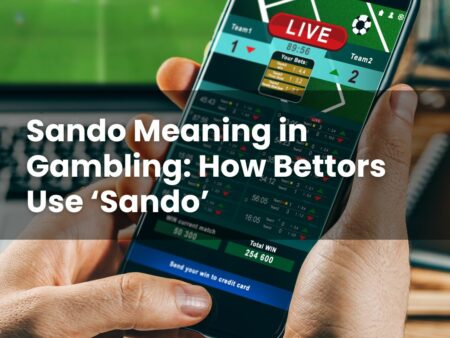Understanding how Trixie bets interact with non runners is useful if you enjoy multiples. When a selection doesn’t take part, the bet is adjusted, which may change how combinations are counted and the potential payout.
This blog post outlines how the doubles and treble are affected, how payouts are worked out, what can happen with more than one non runner, and how different firms approach these situations. Later, we also look at ways to identify selections that might not run if you are considering placing a bet.
Read on to learn more.
What Happens If There’s a Non Runner in a Trixie Bet?
A Trixie is made up of four bets from three selections: three doubles and a treble. If one selection is declared a non runner, the bet is not automatically cancelled. Instead, the parts that involved that selection are recalculated using the remaining active selections.
In simple terms, doubles that included the withdrawn selection are reduced, while those that didn’t remain unchanged. The treble is also adjusted. The overall stake remains the same, though the combination of bets changes, which may lower the potential payout.
Bookmakers handle these adjustments according to their settlement rules. If the treatment of your bet slip isn’t clear, it is advisable to check the rules page or contact customer support for clarification.
How Are Returns Calculated When One Selection Doesn’t Run?
When a selection is withdrawn, the affected bets are treated as if that leg didn’t exist, so the remaining bets are calculated on what remains. For instance:
- The treble is adjusted to a double on the two remaining selections.
- Any double including the non runner becomes a single on its other selection.
- Doubles that never included the non runner stay as doubles.
The resulting payout then depends on the odds and outcomes of the remaining selections. In horse racing, if a withdrawn horse triggers a Rule 4 deduction, the price on the remaining selection may be reduced according to the published scale.
For example, imagine a £1 Trixie on selections A, B, and C. If C is a non runner, the arrangement becomes two doubles on A and B, plus two singles—one on each of A and B. If both remaining selections win, all four bets pay out. If only one wins, only a single returns, which may not cover the total £4 stake unless the price is high.
Can You Still Make a Profit from a Trixie with a Non Runner?
It is possible to receive a return even if one selection doesn’t take part, but it depends on how the remaining bets perform. With one leg withdrawn, attention shifts to the two active selections. If both win, the adjusted doubles and singles could deliver a portion of the original potential. If only one wins, the payout comes from a single, meaning a higher price on that selection would be needed to cover the total outlay.
The main point is that having a non runner reduces the number of ways the bet may produce a return. The outcomes and odds of the remaining selections have the largest influence.
Do Bookies Treat Non Runners the Same in All Trixies?
Most firms follow similar principles: void legs are removed, the remaining selections stay at the odds taken, and racing rules such as Rule 4 may apply if a withdrawal affects the market.
There can be minor differences, for example, in cut-off times for late withdrawals, early settlements, or whether a market includes non runner no bet terms. These are detailed in each bookmaker’s rules. If a settlement appears unusual, customer support can clarify how the bet was treated.
How Many Bets Are Left If One Leg is a Non Runner?
Impact on Doubles and Trebles in a Trixie Bet
A Trixie has four bets: three doubles and a treble. If one selection is withdrawn, the bet remains but is reshaped:
- Doubles that didn’t include the withdrawn selection stay unchanged.
- Doubles that included it are adjusted to singles on the other active selection.
- The treble becomes an additional double on the two remaining selections.
The final set of bets is two doubles on the same pair, plus two singles, each settled at the original odds taken, subject to any deductions in racing.
The payout then depends on the performance of the two remaining selections.
What If More Than One Selection Is a Non Runner?
If two selections don’t take part, the Trixie reduces to bets on the one remaining selection. Combinations that included the withdrawn selections become void for those legs, and the affected bets settle as singles on the remaining selection.
Effectively, the Trixie becomes a set of singles on one selection. If it wins, the payout is the sum of those singles at the odds taken. If it doesn’t, there is no payout. Bookmakers apply these adjustments automatically, and the bet history will show how each part was settled.
How to Spot and Avoid Potential Non Runners in a Trixie
Choosing selections that are more likely to participate reduces adjustments. Checking official declarations and late updates is a straightforward first step. In horse racing, final declarations, going changes, and trainer or steward updates can indicate potential withdrawals. Weather, travel issues, and recent form are also helpful indicators.
Some bookmakers highlight doubtful runners on their market pages. Selections with a history of late withdrawals or returning from a layoff may be more likely to be withdrawn. Waiting until participants are confirmed can be worthwhile if timing allows. Certain markets may offer non runner no bet terms, which return the stake if a selection doesn’t run. In racing, withdrawals can also trigger Rule 4 deductions for the remaining runners.
If you are considering placing a Trixie or any other bet, only use money you can afford to lose. Betting should be treated as a form of entertainment and not as a way to earn income. Be aware of the rules and terms of the bets you place, and keep track of your activity.
For support or guidance, contact organisations such as GamCare or GambleAware, which provide advice and assistance for anyone who may need help managing their gambling.








